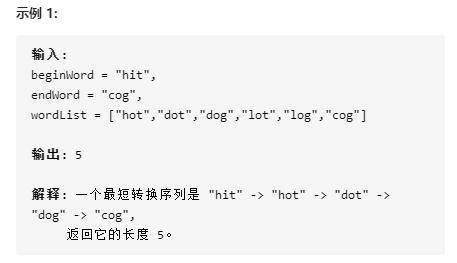【Python刷题Leetcode】搜索(DFS+BFS)
深度优先(递归) or 宽度优先(队列)
class Solution:
def numIslands(self, grid: List[List[str]]) -> int:
if not grid:
return 0
# 初始化mark标记数组
mark = []
for row in grid:
mark.append([0 for _ in grid[0]])
# 初始化岛屿数量
island_num = 0
# 初始化四个搜索方向:上下左右
dx = [-1,1,0,0]
dy = [0,0,-1,1]
# 方法一:深度优先搜索
def DFS(x,y):
mark[x][y]=1
for i in range(4):
# 搜索四个方向
newx, newy = x+dx[i], y+dy[i]
if newx<0 or newx>=len(grid) or newy<0 or newy>=len(grid[0]): # 坐标越界
continue
if mark[newx][newy]==0 and grid[newx][newy]=='1': # 坐标为陆地且没被搜索
DFS(newx, newy)
# 方法二:宽度优先搜索
def BFS(x,y):
Q = [] # 队列 存[x,y]坐标对儿
Q.append([x,y])
mark[x][y]=1
while Q:
xy = Q.pop(0)
curx, cury = xy[0], xy[1] # 读取队头坐标并遍历四个方向
for i in range(4):
newx, newy = curx+dx[i], cury+dy[i]
if newx<0 or newx>=len(grid) or newy<0 or newy>=len(grid[0]): # 坐标越界
continue
if mark[newx][newy]==0 and grid[newx][newy]=='1': # 坐标为陆地且没被搜索
Q.append([newx,newy])
mark[newx][newy]=1
# 整体算法流程:遍历每个陆地节点 若没被mark则DFS或者BFS
for row in range(len(grid)):
for col in range(len(grid[0])):
if mark[row][col]==0 and grid[row][col]=='1':
# DFS(row,col)
BFS(row,col)
island_num+=1
return island_num(但用python过不了)
class Solution:
def ladderLength(self, beginWord: str, endWord: str, wordList: List[str]) -> int:
# endWord不在词典中 无法转换
if endWord not in wordList:
return 0
# 判断两个单词是否能相互转换(只有一个字母不同)
def connect(word1, word2):
num = 0
for i in range(len(word1)):
# 注意这里不能写Word1[i] not in word2[i] 比如abc和bcd虽然只有一个字母不同 但各个位置都不同
if word1[i] != word2[i]:
num+=1
if num>1:
return False
return num==1
# 构造单词之间的转换图(用邻接矩阵 | 记得把beginWord也加进wordList)
def construct_graph(beginWord, endWord, wordList):
graph = {}
if beginWord not in wordList:
wordList.append(beginWord)
# 构造key
for word in wordList:
graph[word] = []
# 构造value 无向图 两两比较
for i in range(len(wordList)):
for j in range(i+1, len(wordList)):
if connect(wordList[i], wordList[j]):
graph[wordList[i]].append(wordList[j])
graph[wordList[j]].append(wordList[i])
return graph
# 宽搜
def DFS(beginWord, endWord, graph):
Q = []
visit = []
Q.append([beginWord,1])
visit.append(beginWord)
while Q:
node, step = Q[0][0], Q[0][1]
Q.pop(0)
# 找到终点 返回步数 结束
if node==endWord:
return step
# 否则宽搜该点的邻接点 分别加入Q和visit
for each in graph[node]:
if each not in visit:
Q.append([each, step+1])
visit.append(each)
return 0
graph = construct_graph(beginWord, endWord, wordList)
return DFS(beginWord, endWord, graph)class Solution:
def makesquare(self, nums: List[int]) -> bool:
# 优化1:nums总和不能被4整除
square = sum(nums)
if not nums or square%4!=0:
return False
# 优化2:按从大到小排序
nums = sorted(nums, reverse=True)
# 初始化4个桶 存储4条边的总和
bucket = [0,0,0,0]
# DFS:放置第i根火柴(边长为target)
def generate(i, target):
# 遍历完所有的火柴了
if i>len(nums)-1:
return bucket[0]==bucket[1]==bucket[2]==bucket[3]==target
# 分别从4个桶里放火柴
for buc in range(4):
# 如果放入桶里长度超了 换下一个桶
if bucket[buc]+nums[i]>target:
continue
bucket[buc]+=nums[i]
if generate(i+1, target):
return True
bucket[buc]-=nums[i]
# 四个桶都放完了 都没返回True
return False
# 开始忘写return了
return generate(i=0, target=square/4)







